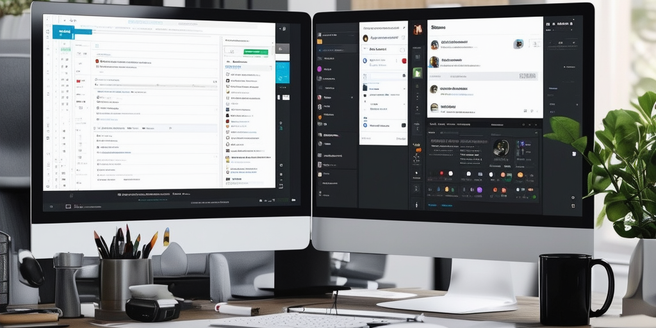
The Role of Collaboration Tools in Team Building
Collaboration tools such as Slack, Microsoft Teams, and Trello play a crucial role in team building by making it easier for team members to communicate and collaborate efficiently. These tools provide a platform where everyone can share updates, assign tasks, and hold discussions, bridging communication gaps and ensuring that everyone is on the same page. Additionally, they offer various features that cater to both small and large teams. Furthermore, these tools often come with integrations that streamline various processes and reduce manual workloads. In addition to these benefits, they also allow for real-time feedback and decision-making, which can significantly speed up project timelines. By integrating these tools into daily workflows, teams can experience increased productivity, more cohesive collaboration, and better overall performance.
Virtual Team Building Activities for Remote Teams
Remote teams often face unique challenges in maintaining a sense of connection and camaraderie. These challenges can sometimes lead to feelings of isolation and disengagement. Virtual team building activities, like online escape rooms, quiz nights, and virtual coffee breaks, help to bridge this gap. Such activities not only keep team members engaged and motivated but also foster a sense of belonging and community. Regularly scheduled team-building exercises can significantly enhance team cohesion and morale, ensuring that remote employees feel valued and part of the bigger picture. Additionally, encouraging casual interactions and informal chats can mimic the natural water-cooler conversations of a physical office. Building on this, investing in advanced communication tools and platforms can further streamline interactions and enhance collaborative efforts.
Improving Communication with Digital Platforms
Effective communication is the cornerstone of any successful team. It forms the foundation upon which all other teamwork and collaboration are built. Without it, even the most talented individuals may struggle to meet their objectives and fulfill their roles effectively. Digital platforms like video conferencing, instant messaging, and collaborative project management tools enable real-time communication and information sharing, regardless of location. These platforms act as bridges, connecting team members who may be scattered across different time zones and geographical regions.
By facilitating instant interaction and continuous dialogue, these tools help teams to break down silos, clarify objectives, and streamline workflows. This interconnectedness ensures that everyone is on the same page and that any misunderstandings can be quickly addressed. When team members can freely exchange ideas and feedback, it fosters a more cohesive and productive work environment. By leveraging these technologies, businesses can ensure that team members are well-informed, aligned with goals, and able to collaborate seamlessly. Ultimately, the strategic use of digital communication platforms can lead to enhanced productivity, stronger relationships, and a more dynamic organizational culture, making it an essential aspect of modern business operations.
Leveraging Gamification for Enhanced Team Cohesion
Gamification involves applying game-design elements in non-game contexts to engage and motivate people. In a team setting, gamification can foster healthy competition, encourage collaboration, and enhance overall cohesion. Using leaderboards, reward systems, and challenges, teams can tap into intrinsic motivations, leading to increased engagement and productivity.
One of the primary benefits of gamification in a team environment is the creation of a dynamic and interactive atmosphere. When team members see their progress on a leaderboard or earn rewards, it promotes individual accountability and enhances team performance. Furthermore, the use of challenges and competitions can lead to innovative problem-solving as team members strive to outperform each other in a friendly manner.
By setting up challenges that require collaboration and critical thinking, individuals can develop relevant skills and gain new experiences. These positive interactions contribute to building a strong, cohesive team that is well-equipped to handle various projects and tasks.
In conclusion, incorporating gamification into team settings goes beyond just making work fun; it has tangible benefits that enhance productivity, collaboration, and team relationships. By leveraging game-design elements strategically, organizations can create an engaging work environment that promotes growth, innovation, and a sense of community among team members.
Measuring Success: Analytics and Feedback in Team Dynamics
To continuously improve team dynamics, it’s essential to measure success and gather feedback. Analytics tools can track performance metrics like task completion rates, communication patterns, and engagement levels. By analyzing this data, teams can identify strengths and areas for improvement. Regular feedback sessions and surveys allow team members to voice their opinions and suggestions, fostering a culture of continuous improvement and openness. Facilitating open discussions enables team members to share their perspectives candidly. Additionally, recognizing and celebrating team achievements can boost morale and motivation. Open communication channels are vital for addressing issues promptly and effectively. Implementing these strategies can lead to a more cohesive and high-performing team. These practices ensure that teams remain dynamic, efficient, and attuned to their goals.
